Want a fast and fun way to teach your kids to solve problems, think conceptually and work logically? A riddle or two a day can really get your kids thinking. Most of them can be silly, but they also incorporate clever word play and logic puzzles.
Try these 14 riddles out. Then spring them on your kids.
1. This riddle won’t make anyone cry.
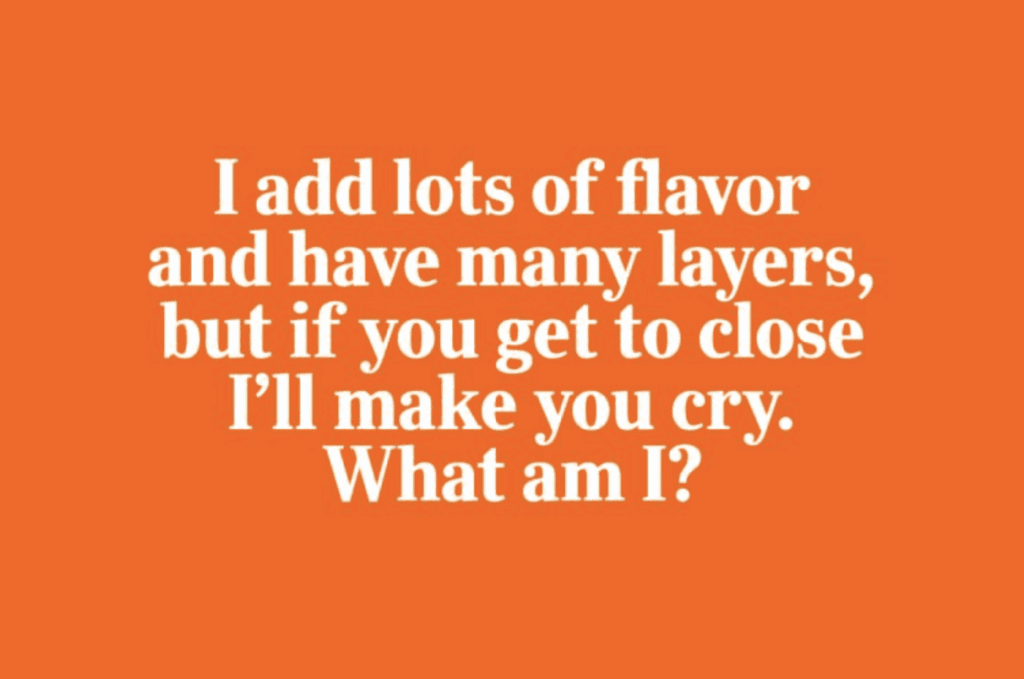
Photo Credit: Readers Digest
I add lots of flavor and have many layers, but if you get too close I’ll make you cry. What am I?
It may make kids guess a few times, but it they push themselves to think conceptually, they may come up with the right answer faster than you think.
Answer: Onion.
2. Kids might have to pull up a chair to figure this one out.
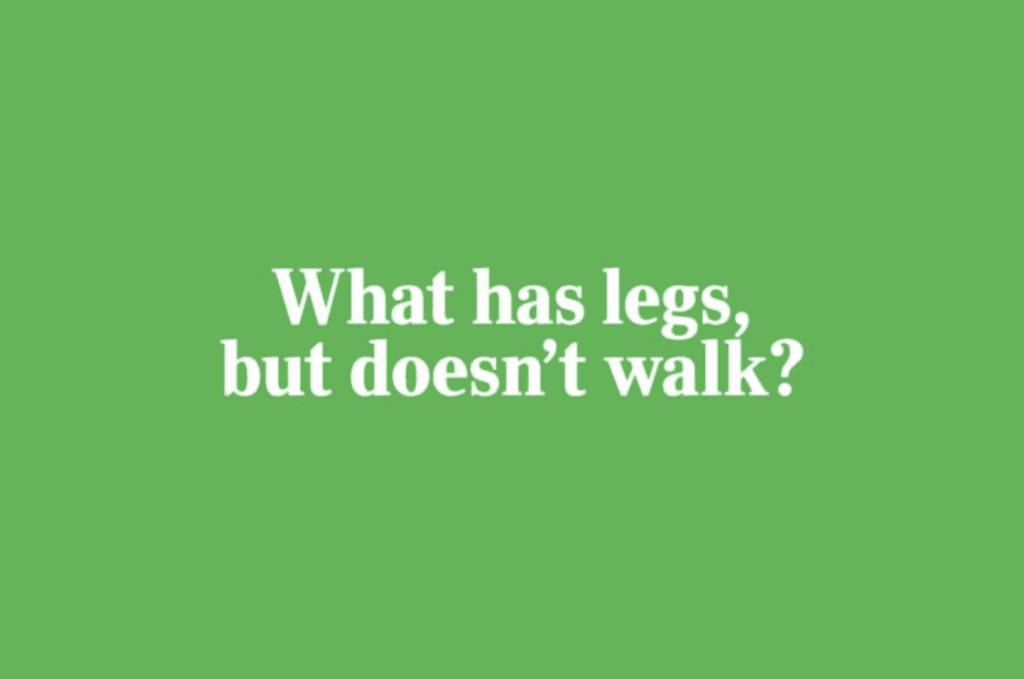
Photo Credit: Readers Digest
What has legs, but doesn’t walk?
What items in the house have legs? Kids will learn to think more figuratively with riddles like this one.
Answer: A table.
3. Rhymes with bee.
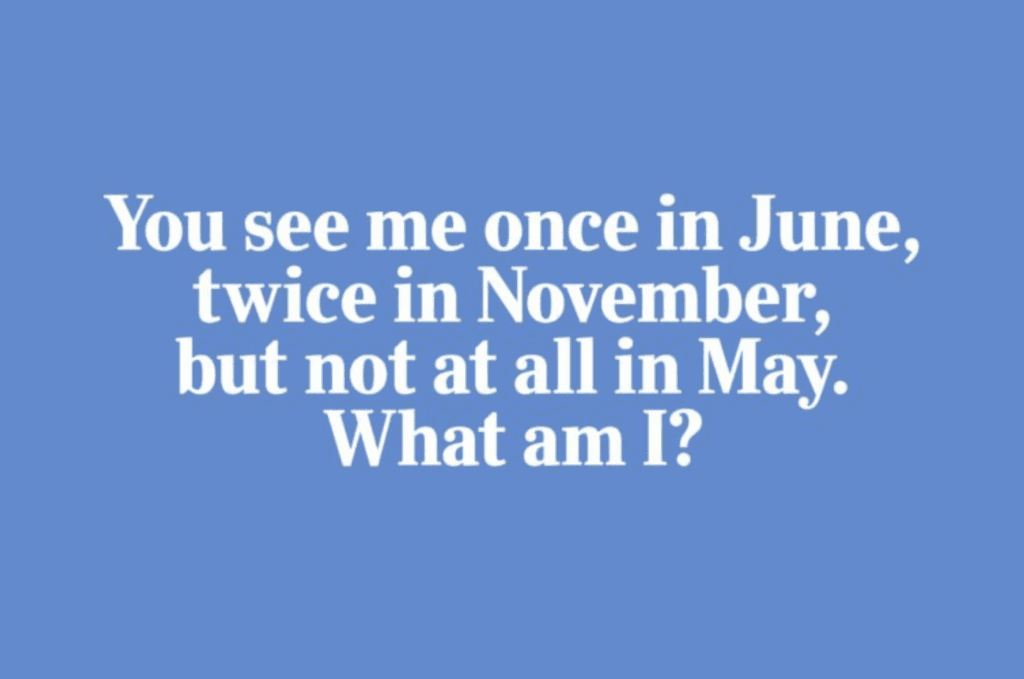
Photo Credit: Readers Digest
Kids may need a little help with this one. Ask them to go through the letters that make up June, November and May.
Answer: The letter “e.”
4. A guaranteed riddle.
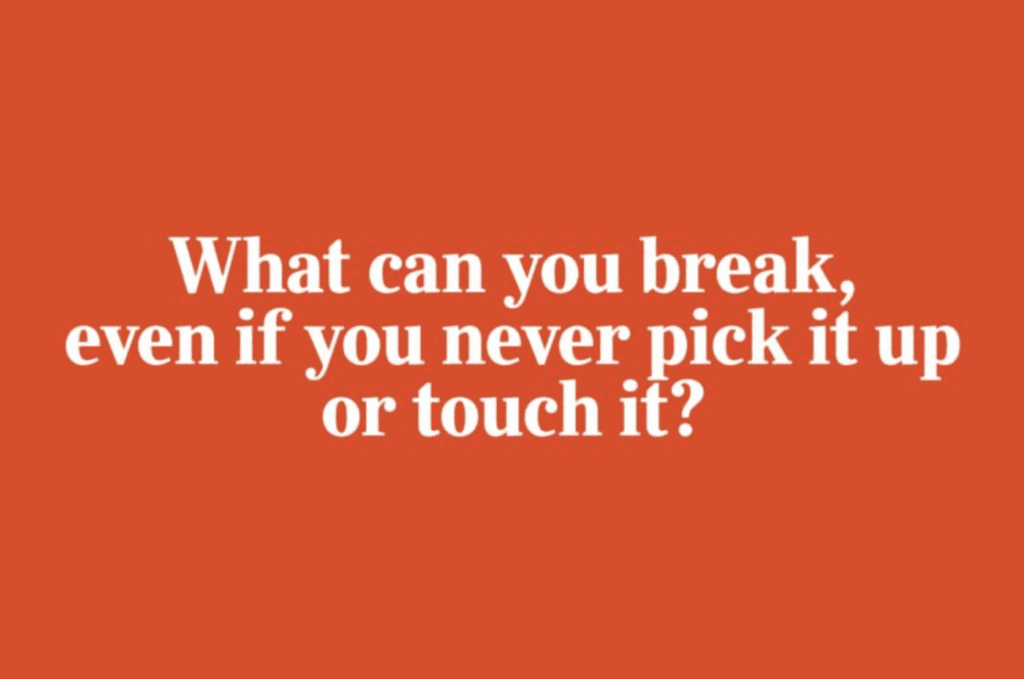
Photo Credit: Readers Digest
What can you break, even if you never pick it up or touch it?
Ask your kids to think beyond objects. This requires conceptual and critical thinking skills to solve.
Answer: A promise.
5. This riddle is a corral of fun.
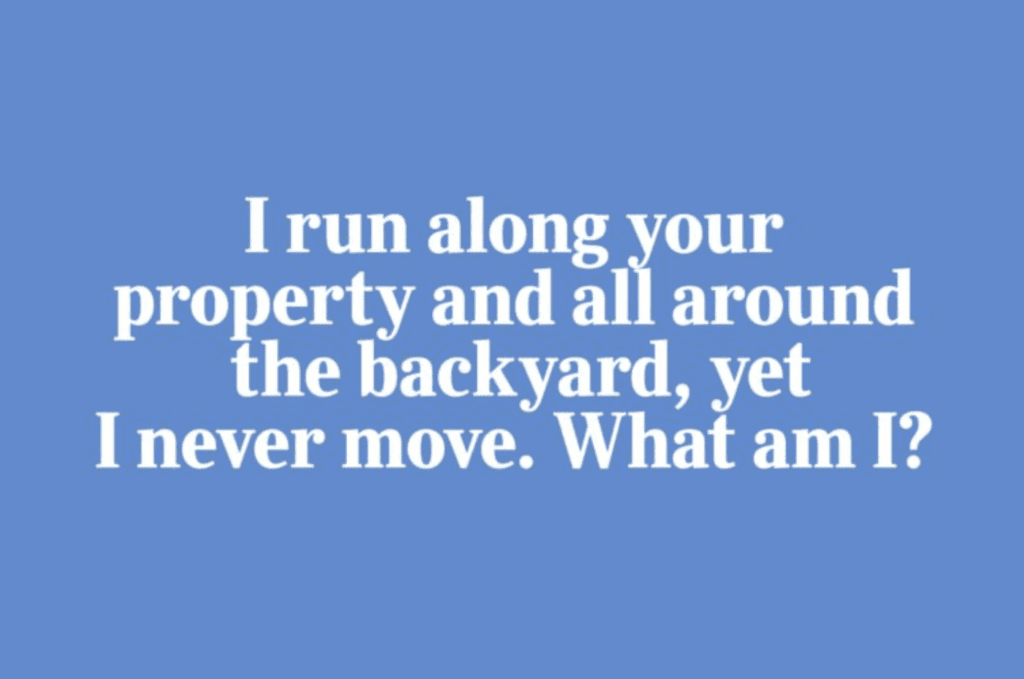
Photo Credit: Readers Digest
I run along your property and all around the backyard, yet I never move. What am I?
Encourage kids to think beyond the first meaning of “run” that comes to mind.
Answer: A fence.
6. Try this riddle at breakfast.
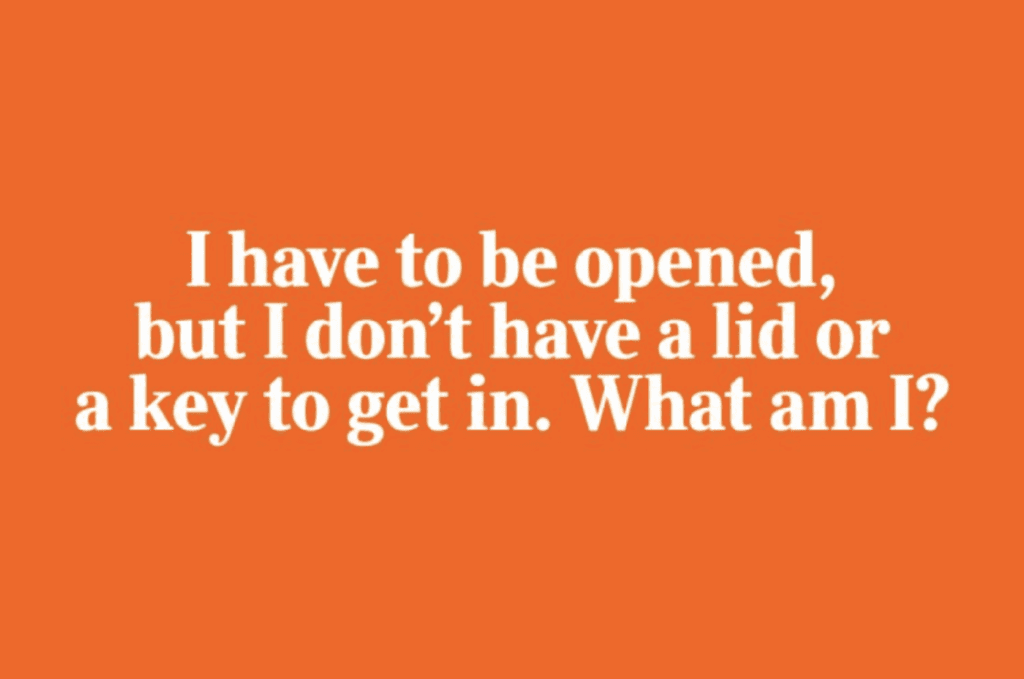
Photo Credit: Readers Digest
I have to be opened, but I don’t have a lid or a key to get in. What am I?
This may take kids some time to figure out, but the answer will make sense when they hear it.
Answer: An egg.
7. This riddle is for weight watchers.

Photo Credit: Readers Digest
Which is heavier: a ton of bricks or a ton of feathers?
The important detail here is the measurement of weight given.
Answer: They both weigh the same.
8. Son of a gun.

Photo Credit: Readers Digest
Tom’s father has three sons: Jim, John, and what’s the third one’s name?
This one seems so simple as the clue is right in the riddle. But it will take some time for someone to call out the right answer.
Answer: Tom.
9. Catching the riddle fever?
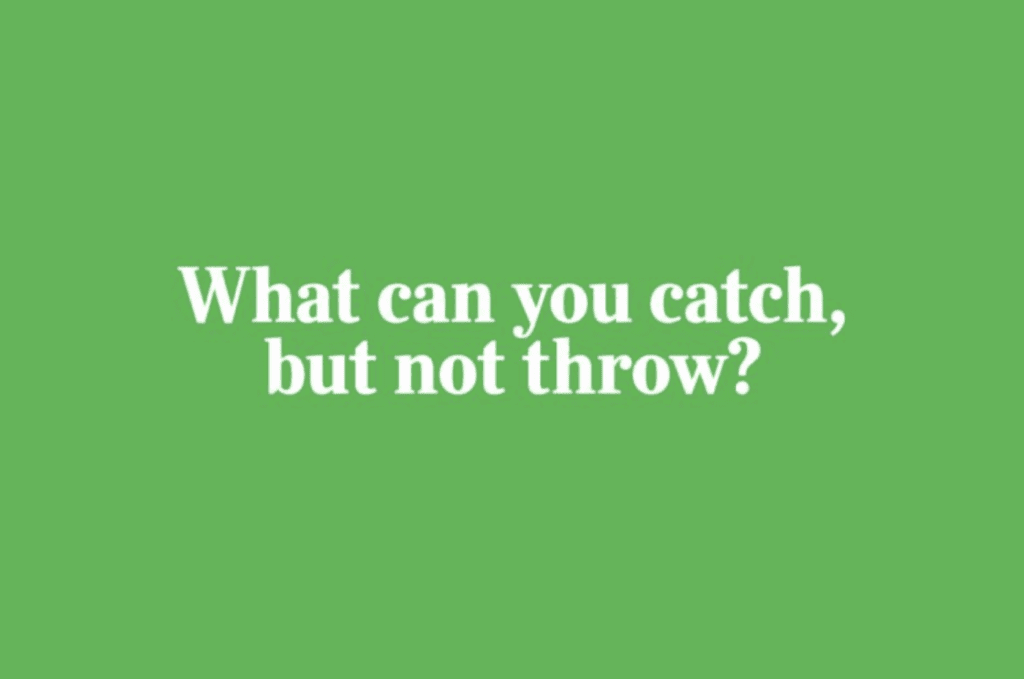
Photo Credit: Readers Digest
What can you catch, but not throw?
Kids may not be familiar with the idiom, but they can still think beyond objects and into the abstract for the answer.
Answer: A cold.
10. Not a teacup.

Photo Credit: Readers Digest
What kind of cup doesn’t hold water?
Think hard, kids and adults. There are a couple of right answers.
Answers: Cupcake or hiccup.
11. There’s always tomorrow.
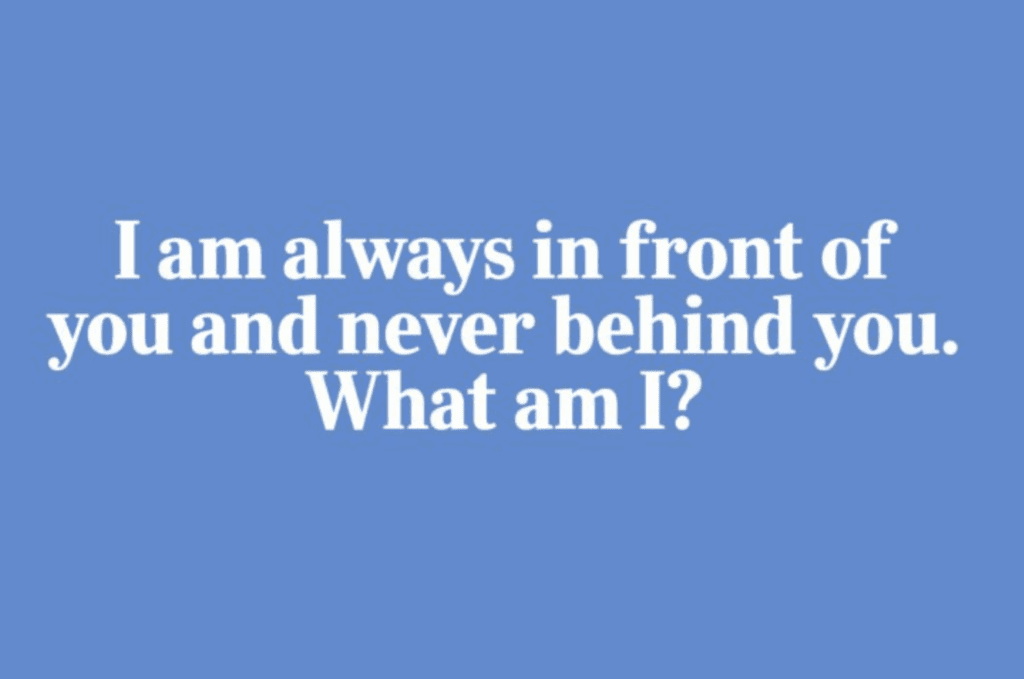
Photo Credit: Readers Digest
I am always in front of you and never behind you. What am I?
The answer is a conceptual one. Encourage kids to think abstractly and reach for it.
Answer: The future.
12. Quietly think about this riddle.

Photo Credit: Readers Digest
What kind of band never plays music?
After the kids go through all the different kinds of bands they know that actually do play music, encourage them to think about other kinds of bands.
Answer: A rubber band.
13. They’ll have a yearning to answer this tricky riddle.

Photo Credit: Readers Digest
Which month of the year has 28 days?
Attention to detail in how the riddle is asked will pay off in answering this one correctly.
Answer: All of them.
14. This is a hairy one.
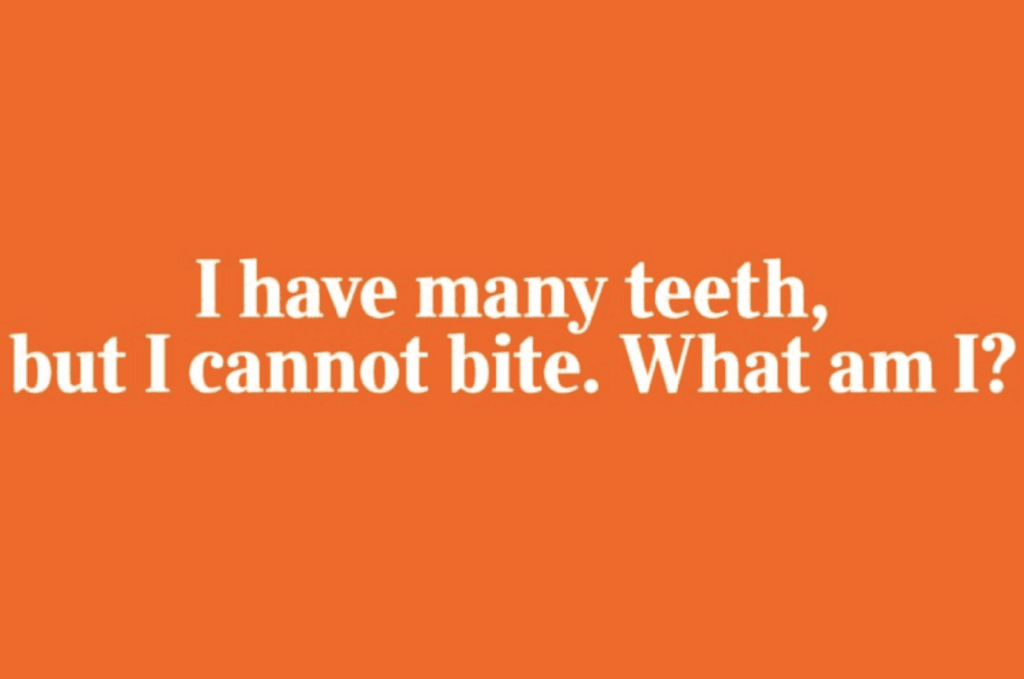
Photo Credit: Readers Digest
I have many teeth, but I cannot bite. What am I?
Kids may not know all the names of the objects they use, but riddles like this one can help them learn.
Answer: A comb.
Riddles are perfect for getting kids to expand their vocabularies and think about everyday objects differently. Plus, they’re fun and make learning more like a game.
So, be the silly parent and and challenge your kids with some of these!

